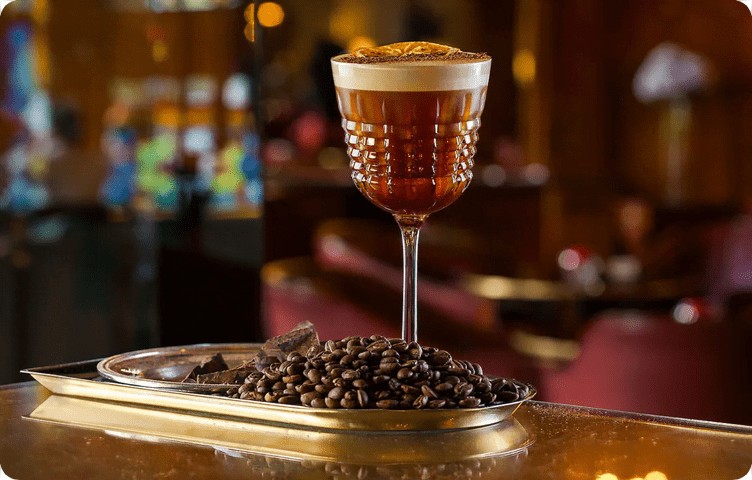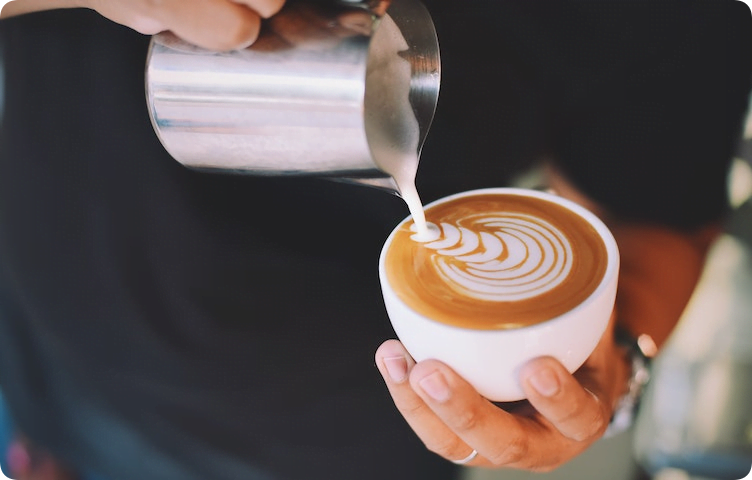A fairly popular question among novice bartenders is: “Why do I need coffee if I want to mix cocktails?” It's quite simple:
The profession of a bartender is vast, unique and multifaceted. And one of the facets of a bartender’s functional responsibilities is, of course, the ability to work with a professional coffee machine.
If a person wants to develop specifically in the direction of a barista, he will study taste descriptors, methods and forms of grain processing, and dozens of alternative cooking methods. But every bartender must be able to prepare classic coffee drinks at the bar, from espresso to latte.
When can a skill come in handy?

Imagine: a beautiful cocktail bar, of course, there is an expensive coffee machine behind the counter, a guest orders espresso, and the bartender either honestly admits that he doesn’t know how to cook, or brews some kind of incomprehensible dregs. Question: will the guest come again? Apparently not. Therefore, if a bartender has professional equipment at his workplace, he must be able to work with it.
Coffee and drinks are often linked together, and famous cocktails are made using the best varieties of espresso. Everyone's favorite Espresso Martini and Irish coffee are just a small part of the cocktails based on coffee drinks. Moreover, knowing how to work with coffee, a bartender expands his taste experience and can prepare amazing cocktails with it.
In addition, any guest will be pleased to see a twig or a heart on their cup, which will certainly increase the tip to the bartender, because, in essence, this is personalization.
The more a bartender knows and knows about the small tricks of the service, the more in demand he will be in the labor market. Competitiveness, and therefore the remuneration of a professional, depends precisely on functionality.

How to master barista skills
Fortunately or unfortunately, there is a learning curve here. Self-taught to master the skill of making coffee is quite difficult and time-consuming. There are many schools that specialize in barista training. Open the Internet, read reviews about schools, choose a convenient option based on cost, location, time and go ahead.

Usually the training is short-term, taking several days, thanks to which the basics of working with coffee will be mastered. And then it’s just practice, practice and more practice . When starting to work with coffee, many people want to learn latte art and draw swans, bears, hearts, etc. on the coffee surface with milk foam. So, the art of latte art takes many hours of practical training, because in addition to the preparation technique and the foam itself, you also need to learn how to pour the drink correctly, forming a semblance of drawings. Therefore, here, of course, you need to be able to set priorities, if the bar where you work places an emphasis on coffee drinks, mastering latte art is a must!
Learn, develop, watch videos, subscribe to famous baristas, read books.
If coffee is a rarely ordered drink in a bar, then the basic knowledge and skills that you learned in the courses will be sufficient, at least while you work in this bar, or until the concept changes.
















































/https%3A%2F%2Fcomplexbar.com%2Fimages%2Fblog%2F244%2Fbarmaen-kofe.jpg)
/https%3A%2F%2Fcomplexbar.com%2Fimages%2Fblog%2F246%2Funiforma-barmena.jpg)
/https%3A%2F%2Fcomplexbar.com%2Fimages%2Fblog%2F246%2Fkak-nanyat-barmena.jpg)
/https%3A%2F%2Fcomplexbar.com%2Fimages%2Fblog%2F246%2FMadler.jpg)
/https%3A%2F%2Fcomplexbar.com%2Fimages%2Fblog%2F246%2F2024-04-09_17.22.54.jpg)
/https%3A%2F%2Fcomplexbar.com%2Fimages%2Fblog%2F246%2F2024-04-09_17.22.47.jpg)
/https%3A%2F%2Fcomplexbar.com%2Fimages%2Fblog%2F246%2FCODE_anons_foamydrops_752%D1%85480_eng.jpg)
/https%3A%2F%2Fcomplexbar.com%2Fimages%2Fblog%2F246%2FAlina_752%D1%85480_eng.jpg)
/https%3A%2F%2Fcomplexbar.com%2Fimages%2Fblog%2F246%2F2024-04-09_17.23.22.jpg)
/https%3A%2F%2Fcomplexbar.com%2Fimages%2Fblog%2F246%2F2024-04-09_17.23.28.jpg)
/https%3A%2F%2Fcomplexbar.com%2Fimages%2Fblog%2F246%2F2024-04-09_17.23.35.jpg)
/https%3A%2F%2Fcomplexbar.com%2Fimages%2Fblog%2F246%2Fdrinksome_752%D1%85480_eng.jpg)
/https%3A%2F%2Fcomplexbar.com%2Fimages%2Fblog%2F246%2Fnude_752%D1%85480_eng.jpg)
/https%3A%2F%2Fcomplexbar.com%2Fimages%2Fblog%2F246%2F752%D1%85480_eng__1_.jpg)
/https%3A%2F%2Fcomplexbar.com%2Fimages%2Fblog%2F246%2F752%D1%85480_eng.jpg)
/https%3A%2F%2Fcomplexbar.com%2Fimages%2Fblog%2F246%2FStudioRaw_752%D1%85480_eng.jpg)
/https%3A%2F%2Fcomplexbar.com%2Fimages%2Fblog%2F246%2FDoppio_tea_752%D1%85480_eng.jpg)
/https%3A%2F%2Fcomplexbar.com%2Fimages%2Fblog%2F246%2FTognana_Stars_Stripes_752%D1%85480_eng.jpg)
/https%3A%2F%2Fcomplexbar.com%2Fimages%2Fblog%2F246%2FRona_752%D1%85480_eng.jpg)
/https%3A%2F%2Fcomplexbar.com%2Fimages%2Fblog%2F246%2FDoppio_vending_752%D1%85480_eng.jpg)
/https%3A%2F%2Fcomplexbar.com%2Fimages%2Fblog%2F246%2FEssence_sukhie_smesi_752%D1%85480_eng.jpg)
/https%3A%2F%2Fcomplexbar.com%2Fimages%2Fblog%2F246%2FODK_sukhie_smesi752%D1%85480_eng.jpg)
/https%3A%2F%2Fcomplexbar.com%2Fimages%2Fblog%2F246%2Funiforma-barmena.jpg)
/https%3A%2F%2Fcomplexbar.com%2Fimages%2Fblog%2F246%2Fkak-nanyat-barmena.jpg)
/https%3A%2F%2Fcomplexbar.com%2Fimages%2Fblog%2F246%2Fsirop_scale_2400.jpeg)
/https%3A%2F%2Fcomplexbar.com%2Fimages%2Fblog%2F246%2FPeugeot_Anons_Paris_U%27Select_Line_Daman_752%D1%85480_eng.jpg)
/https%3A%2F%2Fcomplexbar.com%2Fimages%2Fblog%2F246%2Fkofe-vostochniy.jpg)
/https%3A%2F%2Fcomplexbar.com%2Fimages%2Fblog%2F246%2FMadler.jpg)
/https%3A%2F%2Fcomplexbar.com%2Fimages%2Fblog%2F246%2Fprofbartender_glavn.jpeg)